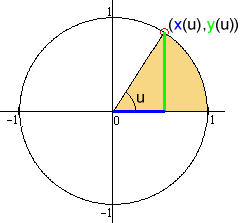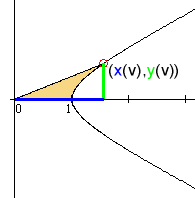| Example 5: Hyperbolic Trigonometry | Click here to open an associated Mathcad worksheet: |
At its most basic level, trigonometry is nothing more than a description of "going around in a circle." The description is made using two circular functions. These functions give the x and the y coordinates of a point on the unit circle

The circular coordinate functions are important enough to have special names: the cosine and the sine. We write
Algebraically, however, there is nothing particularly special about

Sensibly enough, there are hyperbolic functions to give these x and y coordinates. The functions are called the hyperbolic cosine and the hyperbolic sine, respectively, and we write
Nevertheless, these functions do describe many other natural phenomena. Here, for example, is an everyday place to look for hyperbolic functions:

The curve formed by a hanging necklace is called a catenary. Its shape follows the curve of
What does this have to do with the number e? Again, the answer is surprising: Both sinh and cosh can be written as a simple combination of exponential functions:

The number e has found yet another way to describe things "naturally."
For a final example, we'll look at still another part of mathematics: the study of permutations. Just when things seem hopelessly mixed up, e walks in the door to sort them out...
|
|
|
| Back to Contents | |